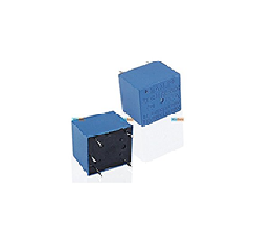Relay sugar cube
A relay is an electrically operated switch. Many relays use an electromagnet to mechanically operate a switch, but other operating principles are also used, such as solid-state relays. Relays are used where it is necessary to control a circuit by a separate low-power signal, or where several circuits must be controlled by one signal. The first relays were used in long distance telegraph circuits as amplifiers: they repeated the signal coming in from one circuit and re-transmitted it on another circuit. Relays were used extensively in telephone exchanges and early computers to perform logical operations. A type of relay that can handle the high power required to directly control an electric motor or other loads is called a contactor. Solid-state relays control power circuits with no moving parts, instead using a semiconductor device to perform switching. Relays with calibrated operating characteristics and sometimes multiple operating coils are used to protect electrical circuits from overload or faults; in modern electric power systems these functions are performed by digital instruments still called "protective relays". Measuring 19.6 x 15.6 x 15.6 mm, the G5LA sugar cube relay offers a switching capacity of 10 A at 250 Vac/24 Vdc on the normally open contacts and 5 A at 125 Vac/24 Vdc on the normally closed contacts, with a typical electrical life of 100,000 operations at those rated loads. Power consumption is 360 mW for the 5-, 9-, 12-, and 24-Vdc coils, and 480 mW for the 48-Vdc coil. Operating temperature range is 40 to 85C. All models are RoHS compliant ($0.49 to $0.68 ea/500—stock to 10 weeks.)

